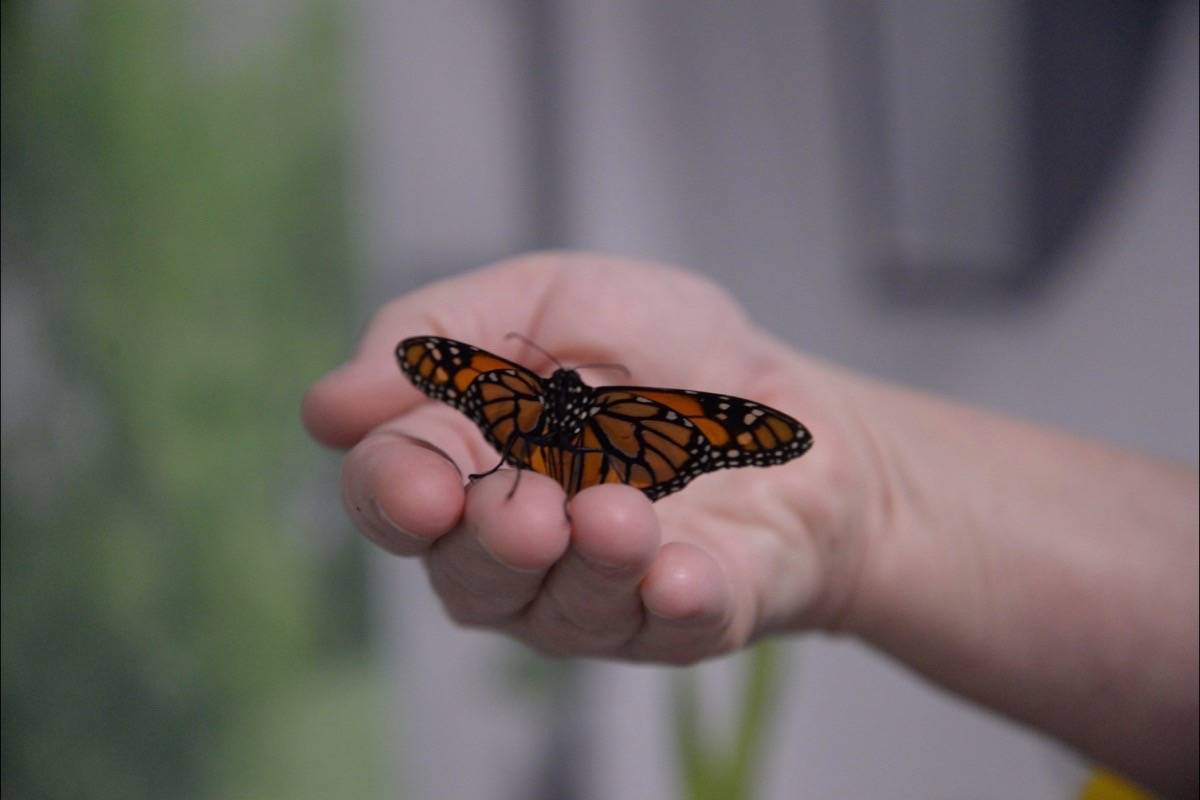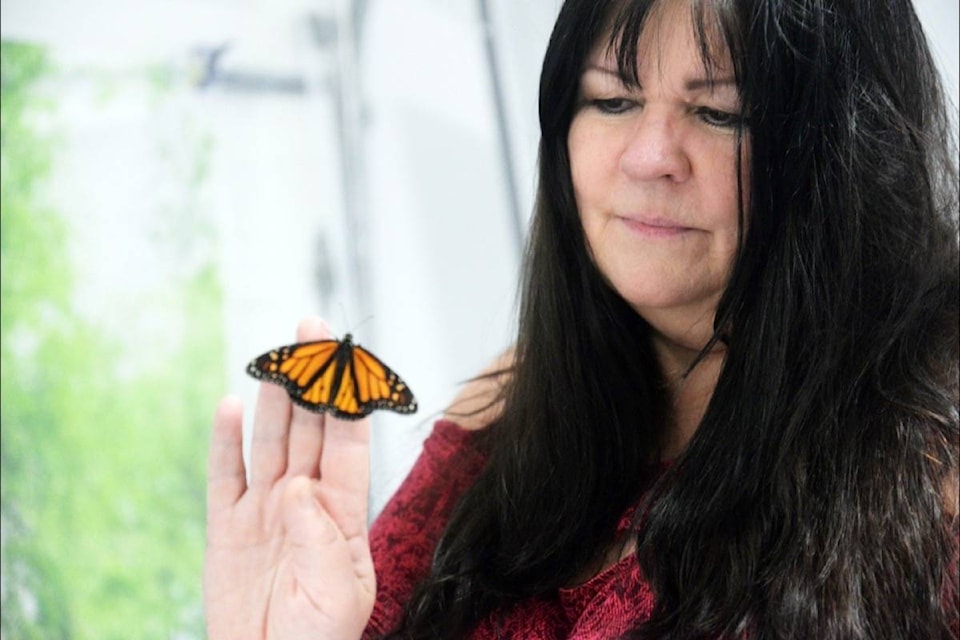If you noticed more butterflies in Agassiz last summer, you might be surprised to know that they probably didn’t fly from California. In fact, they were likely bred and raised right here in town.
News of disappearing species has become all too common, but while some might simply be saddened to hear of the sharp decline in endangered monarch butterfly populations, an Agassiz photographer has taken it upon herself to try to reverse the trend.
Corry Anne Meerveld and her butterflies have something of a symbiotic relationship. Meerveld uses the delicate, brightly coloured insects for her photography business – selling the stunning images for use in textbooks and magazines. In return, she offers the butterflies safe refuge from wasps and pesticides, setting them free every summer. Last year she released 300 painted ladies and 125 monarchs.
And that’s not all – Meerveld is on a personal mission to revitalize butterfly populations. At least, locally.
She gives away milkweed seedlings to anyone who will take them, hoping an abundance of the plant – the sole food of monarch caterpillars and the place where monarchs lay their eggs – will help to bring back the delicate critter.
“I’m kind of just giving them a hand,” Meerveld said. “I give them a place to naturally lay. I collect the eggs [and] go through the caterpillar process. I help them through all of that and then release the butterfly.”
The monarch butterfly has always been close to Meerveld’s heart. But it wasn’t until she watched, horrified, as freshly born caterpillars died on milkweed coated in pesticides, that she became a butterfly “activist.”
“It broke my heart and I thought, I have got to try and get some awareness for this.”
Pesticides are only one of the threats facing the monarch, a species that has become a rarity in B.C. – with populations sometimes so small they’re undetectable to wildlife organizations. Monarchs are vulnerable to extreme weather events, herbicides and the subsequent decline in milkweeds.
“I don’t think people are realizing, with the change in the climate ... how we’re losing things so fast,” Meerveld said. “And I think we’re losing things that we don’t even realize.”
But Meerveld believes the monarchs still have a chance. The incredible biology of the tiny winged bugs is a cause for hope on its own, she said.
“I always say, if people don’t believe in life after death, watch what happens with a butterfly. It comes from this little, tiny egg. It becomes this crazy caterpillar. To see the whole process … They’re truly magical.”
Not to mention the B.C. monarch’s 2,000- to 5,000-kilometre yearly migration to California – the second longest of all known insects.
So how does one breed butterflies, exactly? It’s a delicate process, Meerveld explained. One that requires constant cleaning and bleaching to avoid disease. The last thing she wants to do is release a sick butterfly and damage wild flocks.
As for photography, Meerveld takes advantage of the insect’s immobility when it gets cold.
In the winter, the butterflies live in large netted enclosures in Meerveld’s studio, where a number of large nature-pattered green screens help her create images that make it hard to believe they were taken indoors.
In summertime the butterflies enjoy an outdoor enclosure in Meerveld’s yard. But the warmth of the sun complicates photo shoots. Meerveld gets up before dawn, capturing photos of the butterflies in their cold, sleep-like state, before the sun warms them up and they become hyperactive.
While Meerveld’s butterflies make for beautiful photos, her photography business doesn’t seem to be her first priority. Saving the butterflies is.
With 200 species of wildflowers blooming in her garden every summer, Meerveld wants to create a community where butterflies can thrive. While the hollyhocks and lupines add to the unruly beauty of her summer yard, the native milkweed is the plant that has the power to save the monarch, she said.
“With access to milkweed and getting rid of the pesticides I think the [monarch] will bounce back and be incredible,” she said. “I think there’s a good chance for them if people do it sooner rather than later.”
Meerveld is happy to give away different types of non-invasive milkweed to anyone interested in helping the local monarch population. The seedlings will not be ready until spring, but anyone interested can email Meerveld at info@fraservalleybutterflies.ca.
Meerveld will be posting information about seedlings and butterfly releases on her Facebook page: @corryannephotography.

